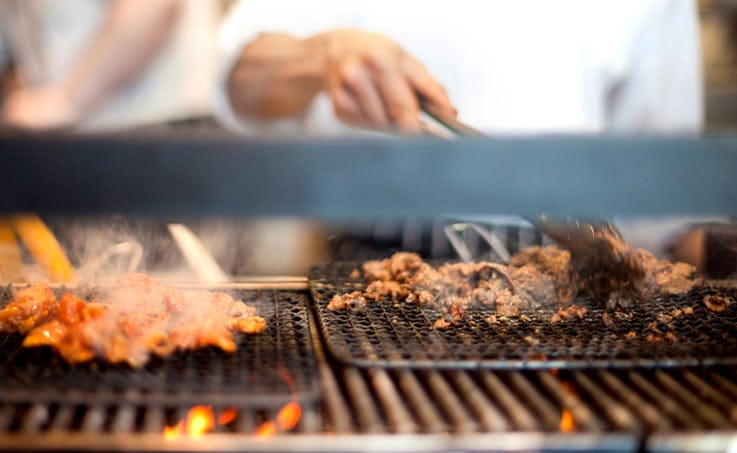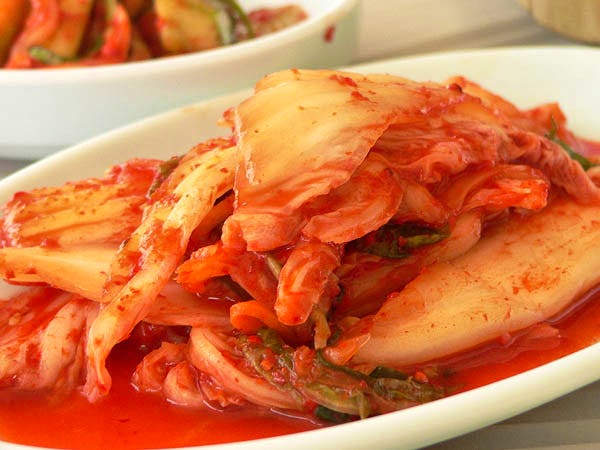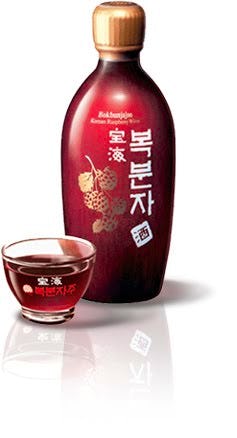Do you know your gochujang from your guk? So many terms can make ordering in Korean restaurants a bit of a minefield. Follow our simple guide to Korean food lingo to up your ordering prowess.
Key food words:
Banchan
These are side dishes, a mix of kimchis (see below), seaweeds and other small plates. These are sometimes included with your order, though menus rarely mention it. Ask your waiter and they’ll likely be impressed with your knowledge; it might just mean you get a bit of special treatment.
Bibimbap
This literally means ‘mixed rice’. It comes served in a hot stone bowl, usually topped with vegetables, meat (often beef) and pickles. It may also have a raw egg yolk on top, which will be cooked by the heat of the dish as you stir it in. This is a must-try Korean classic.
 Bulgogi (pictured right)
Bulgogi (pictured right)
This is simply grilled beef which has been marinated in a sweet soy-based sauce. In many Korean restaurants it will be cooked at the table.
Dak
This is chicken. Simples.
Gochujang
A spicy paste made from fermented red chillies, this is deep, earthy and fiery stuff. Be wary if you’re not a spice fan.
Guk
If you’re ordering Guk, you’re ordering soup.
Hoe
No sniggering. This is raw fish that has been finely sliced, served with soy sauce and maybe a spicy vinegar dip. It’s Korea’s answer to sashimi.
Jeon
This is the word for a whole group of Korean foods which are pancake-like. Pajeon is probably the most common, it comes topped with spring onions.
 Kimchi (pictured right)
Kimchi (pictured right)
You probably know this one. Kimchi is spicy, fermented cabbage and it’s Korea’s national dish. The level of spiciness can vary from the mild to the mind-blowing, and it tends to be pretty big on garlic, too.
Naengmyeon
Don’t be fooled by a menu that fails to mention the temperature of this dish: these are cold noodles, usually served in a light broth and topped with vegetables and meat.
Samgyeopsal
It’s a big word, but it simply means pork belly.
Twigim
When you see this neat little word, you know that whatever you’re getting is going to be fried.
And what to drink?
Beers
The most common beers you’ll find in Korean restaurants are Cass and Hite, both are light, refreshing lagers. As well as allowing for humorous photographs with part-covered labels, they’re a good match for the often spicy dishes.
 Bokbunjaju (pictured right)
Bokbunjaju (pictured right)
This is a fruit wine that’s made from Korean black raspberries (similar to blackberries). It’s deep red in colour, sweet and richly fruity tasting. It’s comparable to a dessert wine, although it’s commonly drunk at the start of the meal rather than the end.
Cheongju
This is a clear Korean rice wine and it has a taste not dissimilar to sake.
Makgeolli
This is a sweet, gloopy, milky alcoholic drink made from fermented rice. It’s not to everyone’s taste, so beware when ordering.
Soju
This is a clear, distilled spirit which usually has an abv of around 20%. It could crudely be described as a weak vodka, although the taste is slightly more coarse and nutty. It is drunk from small shot-like glasses, though it is often sipped. In terms of etiquette, you should never pour your own drink and you shouldn’t refill a glass until it’s completely empty.
Where to eat?
Take a look at our pick of London’s best Korean restaurants here.